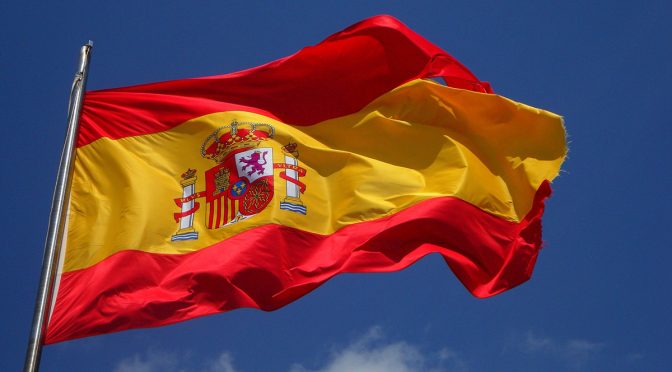Wind energy surpasses the barrier of 30 GW installed, a milestone possible thanks to a competitive and innovative value chain based in Spain.
More than 25 years of innovation: Wind power in Spain leads electricity generation. On this day, the latest technological advances and future challenges are analyzed.
The Wind Energy Association (AEE) celebrates a new edition of the annual technical reference event for the wind sector, the Operational Analysis of Wind Farms conference. More than 180 experts meet to analyze and debate improvements in the operation and maintenance of Spanish wind farms.
Just 25 years ago the first commercial wind farms were installed in Spain. The Spanish wind sector has followed an exemplary technological path worldwide. In these years it has managed to have 100% of the value chain in the country, a characteristic that differentiates us from other countries and positions us at the top of the competitiveness ranking. Wind technology has evolved with larger, more powerful and efficient wind turbine models, and also with new developments in software, systems, sensors, processes, cybersecurity, which make this technology efficient and profitable and at the technological forefront. .
Current situation of the wind sector in Spain
The wind contingent is in full growth. The operation and maintenance activity of wind installations is the market segment with the greatest capacity for growth and the one that will make the difference in the future. The parks with better, more anticipatory practices that incorporate innovations will be the most productive and profitable. The correct operation of wind farms, not only economically but also technically, is a differentiating factor. Wind energy contributes to lowering the price of electricity and is the most efficient in electricity generation per installed megawatt and network capacity used. This conference is held at the most opportune time and has the best experts in each innovation segment.
The National Integrated Energy and Climate Plan (PNIEC) in development gives wind power the responsibility of being the first source of electricity generation in the electrical system and for this it is necessary to double the current power in 7 years, going from the current 30 GW to more than 60 GW in 2030. On the other hand, just a few months before the end of 2023, more than 6 GW will have reached 20 years old and almost 1 GW will be 25 years old.
For the president of AEE, Juan Diego Díaz, “the key to success in meeting the 2030 objectives is to govern the process and advance along the path year after year, guaranteeing balance and efficiency schemes. This has been the success story of wind power: linear growth, with an ambitious but realistic dimension, driving the value chain and enabling the conditions for the development of our own technology.”
We are faced with a scenario in which decision-making on investments for renewables must be analyzed with logic that covers multiple perspectives: financing, regulation, integration in the system, coexistence in the environment and the circular economy. Furthermore, renewable generation – both connected and that which will come in the future – must anticipate the new scenarios of massive penetration in the Grid and its implications at the nodes.
Juan Diego Díaz recalled at the opening of the day that in Spain and the rest of the European countries we are at a decisive moment for the future of the wind industry. “Wind power is a success story. We are already the first technology in the system, producing 22% of the electricity we consume. We have managed to overcome the barrier of 30 GW of installed wind power, a milestone possible thanks to a competitive and innovative value chain. However, we find ourselves in a critical situation. The confluence of various factors has generated a perfect storm in which the wind industry finds itself in a moment of extreme financial vulnerability, with investment limitations just at the moment of greatest growth expectations for the European wind market and when the Asian industry has the most aggressive wind export commercial strategy in its history. We are faced with a demand for machines that can be classified as historical and with financial limitations, which make us vulnerable to aggressive commercial policies from other non-European markets,” Díaz highlights.
Beatriz Corredor, president of REDEIA, highlighted at the inauguration that “after almost 25 years of wind deployment and collaboration between the industry and Red Eléctrica, now, to meet the decarbonization objectives and consolidate Spain’s renewable leadership, it is necessary to continue with the reinforcement of networks to facilitate their integration, streamlining processing processes and incorporating new technology.
How has wind technology evolved in these 25 years?
The wind turbines have gone from an initial power of 1.25 MW with a height of 20-30 meters to the 6 MW that are currently being installed and reach up to 200 meters in height.
Thanks to technological evolution, the first wind turbines generated 300 MWh per year, equivalent to the consumption of 150 families (a town of 600 inhabitants). Currently, a wind turbine generates 15,000 MWh annually, enough to supply electricity to 6,000 families (a city of 18,000 inhabitants).
In recent years, wind energy has become the main source of electricity generation in Spain. So far this year, wind power has generated 22% of the electricity we consume. Thanks to the 30 GW of installed capacity, in 2022 it supplied 61 TWh of clean electricity, which would be equivalent to 26% of national demand throughout the year.


